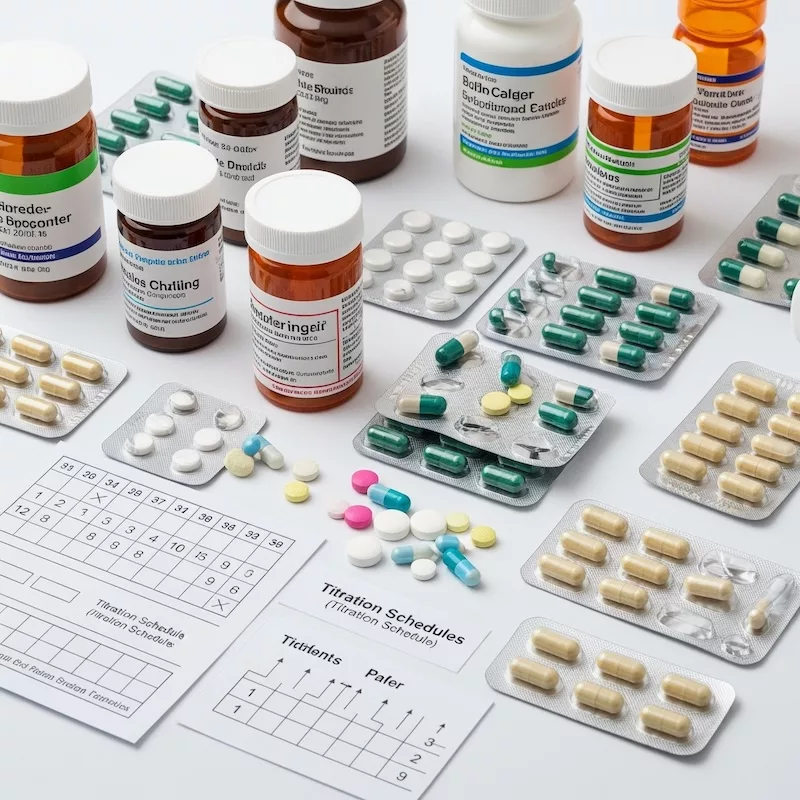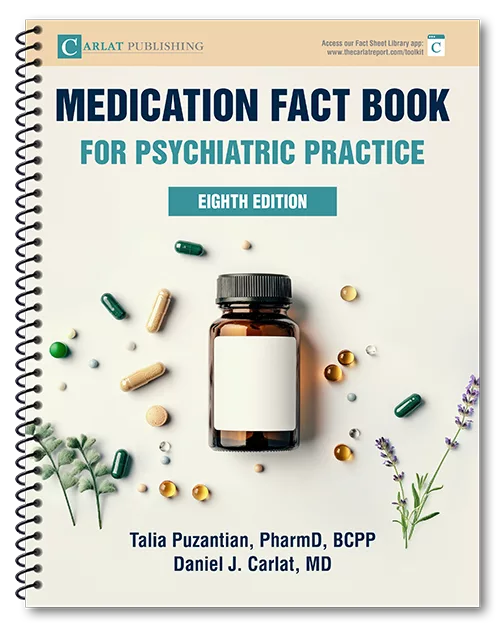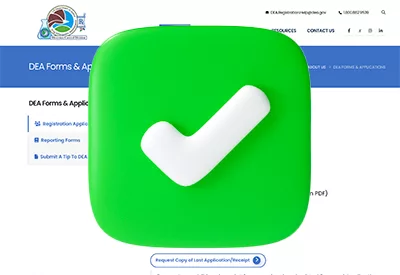Ziprasidone and quetiapine. One goes better fast, one slow. Also the mystery of ghost pills, and a research update on pramipexole.
Publication Date: 09/08/2025
Duration: 13 minutes, 47 seconds
Transcript:
KELLIE NEWSOME: Should you titrate antipsychotics slowly, or just get it over with and push the dose up? The answer depends on which one you’re using. Plus, a research update on pramipexole in treatment-resistant depression. Welcome to the Carlat Psychiatry Podcast, keeping psychiatry honest since 2003.
CHRIS AIKEN: I’m Chris Aiken, the editor in chief of The Carlat Report.
KELLIE NEWSOME: And I’m Kellie Newsome, a psychiatric NP and a dedicated reader of every issue.
CHRIS AIKEN: Two antipsychotics that have always confused me are quetiapine and ziprasidone. These cause a lot of problems when starting them – sedation, dizziness, hypotension. So should you raise them slowly, or does that just drag out the pain like slowly going into the cold water of the pool one inch at a time? The answer is different for each of them. With ziprasidone, you want to titrate rapidly. Paradoxically, patients tend to tolerate ziprasidone better in the higher doses. Several studies found that patients stuck with ziprasidone longer if they started it at a high dose, like 120-160 mg, then if the started it at a low dose, like 40-80 mg. On a similar note, many clinicians find it easier to tolerate ziprasidone if they raise it up quickly, and that strategy has also proven successful in clinical trials. Here’s how to titrate it in mania and schizophrenia: start with 40 mg twice a day with a full meal, and raise to the treating dose of 120-160 mg/day by the third day of treatment. Quetiapine is a different story. Faster titration is less tolerable, with higher rates of sedation, dizziness, agitation, and other side effects. That is from a 2019 analysis of 18 studies comparing the standard titration in the PDR to more rapid approaches. So stick with the titration schedule in the PDR for quetiapine, but keep in mind that the PDR allows aster titration with the XR because it smooths out the peak levels that cause dizziness and orthostasis. That is reflected in the PDR, which recommends slower titration with the instant release. For example, in schizophrenia they start quetiapine at 50 mg/night with instant release and 300 mg/night with extended release, and head to head comparisons of instant vs XR quetiapine in the same doses also find that the XR is better tolerated during titration.
KELLIE NEWSOME: XR is better tolerated in titration, but what about once they are on it?
CHRIS AIKEN: That's a good question. Early on, when the drug company was trying to shift everyone to the patented XR, the reps passed around this study suggesting that XR caused less fatigue than instant release9. But it wasn’t a fair comparison – they were comparing instant release twice a day versus XR one at night, and of course, you’re going to be more tired if you take an instant release quetiapine when you wake up! Now, the main advantage of the XR version is that there is less hypotension and falls on it, and that gets to be a problem when you get beyond 300 mg/day, so I usually use XR then if the patient is older, frail, and prone to hypotension.
KELLIE NEWSOME: But what about if they are just using 150-300 mg at night – the kind of dose we use for depression?
CHRIS AIKEN: There, the answer is not what the drug reps would have hoped for. Morning fatigue is higher with quetiapine XR than with instant release at night, which is what you’d expect since the XR lasts longer.
KELLIE NEWSOME: Quetiapine is a complicated drug, so let’s do a bottom line. Start quetiapine as XR to improve tolerability. If you’re aiming for a high dose – like in mania or schizophrenia – or your patient is older and prone to falls – stick with the XR. If you’re aiming for 150-300 mg, you might consider switching to instant release after the titration. And why would you want to do that? If your patient has daytime fatigue, or if they can’t tolerate the onerous directions of the XR – they need to take it an hour away from food and alcohol to prevent the dose from breaking down all at once, but 12 hours before they plan to wake up. Let’s pause for a preview of the CME quiz for this episode. Earn CME for each episode through the link in the show notes.
CHRIS AIKEN: I’m Chris Aiken, the editor in chief of The Carlat Report.
KELLIE NEWSOME: And I’m Kellie Newsome, a psychiatric NP and a dedicated reader of every issue.
CHRIS AIKEN: Two antipsychotics that have always confused me are quetiapine and ziprasidone. These cause a lot of problems when starting them – sedation, dizziness, hypotension. So should you raise them slowly, or does that just drag out the pain like slowly going into the cold water of the pool one inch at a time? The answer is different for each of them. With ziprasidone, you want to titrate rapidly. Paradoxically, patients tend to tolerate ziprasidone better in the higher doses. Several studies found that patients stuck with ziprasidone longer if they started it at a high dose, like 120-160 mg, then if the started it at a low dose, like 40-80 mg. On a similar note, many clinicians find it easier to tolerate ziprasidone if they raise it up quickly, and that strategy has also proven successful in clinical trials. Here’s how to titrate it in mania and schizophrenia: start with 40 mg twice a day with a full meal, and raise to the treating dose of 120-160 mg/day by the third day of treatment. Quetiapine is a different story. Faster titration is less tolerable, with higher rates of sedation, dizziness, agitation, and other side effects. That is from a 2019 analysis of 18 studies comparing the standard titration in the PDR to more rapid approaches. So stick with the titration schedule in the PDR for quetiapine, but keep in mind that the PDR allows aster titration with the XR because it smooths out the peak levels that cause dizziness and orthostasis. That is reflected in the PDR, which recommends slower titration with the instant release. For example, in schizophrenia they start quetiapine at 50 mg/night with instant release and 300 mg/night with extended release, and head to head comparisons of instant vs XR quetiapine in the same doses also find that the XR is better tolerated during titration.
KELLIE NEWSOME: XR is better tolerated in titration, but what about once they are on it?
CHRIS AIKEN: That's a good question. Early on, when the drug company was trying to shift everyone to the patented XR, the reps passed around this study suggesting that XR caused less fatigue than instant release9. But it wasn’t a fair comparison – they were comparing instant release twice a day versus XR one at night, and of course, you’re going to be more tired if you take an instant release quetiapine when you wake up! Now, the main advantage of the XR version is that there is less hypotension and falls on it, and that gets to be a problem when you get beyond 300 mg/day, so I usually use XR then if the patient is older, frail, and prone to hypotension.
KELLIE NEWSOME: But what about if they are just using 150-300 mg at night – the kind of dose we use for depression?
CHRIS AIKEN: There, the answer is not what the drug reps would have hoped for. Morning fatigue is higher with quetiapine XR than with instant release at night, which is what you’d expect since the XR lasts longer.
KELLIE NEWSOME: Quetiapine is a complicated drug, so let’s do a bottom line. Start quetiapine as XR to improve tolerability. If you’re aiming for a high dose – like in mania or schizophrenia – or your patient is older and prone to falls – stick with the XR. If you’re aiming for 150-300 mg, you might consider switching to instant release after the titration. And why would you want to do that? If your patient has daytime fatigue, or if they can’t tolerate the onerous directions of the XR – they need to take it an hour away from food and alcohol to prevent the dose from breaking down all at once, but 12 hours before they plan to wake up. Let’s pause for a preview of the CME quiz for this episode. Earn CME for each episode through the link in the show notes.
1. Which statement about ghost pills is true
A. They occur with most extended release formulations
B. The medication is still completely released, even when they are excreted in the stool.
C. Their appearance in the stool is a sign of incomplete medication release
D. Their appearance in the stool is a sign of delayed medication release
If you’ve listened long enough, you’ve probably figured out the point of this podcast series. We don’t want to scare patients with false-starts on meds. But side effects are not the only things that frighten patients. There are also ghost pills. Here’s how it happens. You switched your patient from Adderall to Concerta, and they call to complain that it isn’t working. Once more, they know why: They can see the entire undigested capsule in their stool after they pass a bowel movement. What they are really seeing is a “ghost pills.” These are normal and expected with extended released capsules that use an osmotic delivery system – a kind of internal pump that squeezes out the medicine but leaves the capsule intact. Reassure your patient that they are still getting all the medicine, and a little advance warning helps. Here are the psych meds that leave these ghostly trails: Concerta, carbamazepine XR, paliperidone (Invega), and venlafaxine XR tablets, but not venlafaxine ER. Now for our research update: Pramipexole augmentation for the acute phase of treatment-resistant, unipolar depression: a placebo-controlled, double-blind, randomised trial in the UK, by Michael Browning and colleagues from Lancet Psychiatry.
CHRIS AIKEN: Pramipexole is a dopamine D3 agonist approved in Parkinson’s disease and Restless Leg Syndrome. It is one of many novel meds for depression that has enough support to recommend it when nothing else works, but not enough to rank it in any practice guidelines. This study changes that. It is large, 150 patients, multi-center, double-blind, placebo-controlled, and it is long – they tested the drug against placebo for nearly a year. 48 weeks. They also tested it in true treatment resistance, not just after one antidepressant as 70% of augmentation trials do. These patients had to fail at least 2 trials; on average, they failed 3-4 trials. Here’s the most important part: Pramipexole worked on the primary and all secondary outcomes with a large effect size, 0.9. By comparison, most other augmentation strategies – lithium, antipsychotics – have only a small effect size. And pramipexole kept working – the benefits did not diminish over the 48-week trial – something we can’t say for antipsychotics, which failed by the 6-month mark in most depression trials. The dose they used was 2.5 mg, and they titrated it slowly, starting at 0.125 and raising it every few days. Other trials used lower doses successfully, 1.5 mg, but there was a hint in some studies that patients with higher degrees of treatment resistance responded better to the 2-3 mg range. The main limitation of the study was that 70% of the patients correctly guessed whether they got the med or ghe placebo, possibly because it worked so well or was sedating. But that’s a limitation of the antipsychotic and ketamine trials as well – and is a strength of this study. Most studies do not ask patients to guess what they got. This study also answered a nagging question about pramipexole – does it make people gamble compulsively? We know that’s a risk with other D3 agonists like aripiprazole, brexpiprazole, and cariprazine, but strangely, there were no reports of compulsive gambling or other hedonic excesses in the reports of 600 patients with mood disorders who took the drug in the earlier trials. This is a stark contrast to the Parkinson’s trials, where 15% of the patients have hedonic dysregulation on the drug. This study carefully assessed for that – cause if you don’t ask, you don’t know – and they found a rate of 3%. In my own practice, the rate is closer to 1%, but I use lower doses like 1.5 mg while this study used 2.5 mg, and I have found the hedonic dysregulation improves by lowering the dose. Hallucinations are also a dose-dependent risk on pramipexole, as it can nudge the D2 receptor as well. In this study, only one patient developed hallucinations, and it was after starting a steroid, so they weren’t sure what was causative. The bottom line: Our available augmentation strategies for treatment-resistant depression are high on risks and low on benefits. Pramipexole brings a better ratio there, with no weight gain, sexual dysfunction, or major medical risks outside of hypotension. We’ll have more details on how to use it in an upcoming Carlat textbook on Difficult to Treat Depression. Look for it this Fall.
KELLIE NEWSOME: Looking for more ways to bring psychotherapy into the medication visit? Check out the September issue of the Carlat Psychiatry Report, where Drew Ramsey shares his Nine Tenets of Mental Fitness. Start your subscription with the promocode PODCAST to get $30 off.
CHRIS AIKEN: Pramipexole is a dopamine D3 agonist approved in Parkinson’s disease and Restless Leg Syndrome. It is one of many novel meds for depression that has enough support to recommend it when nothing else works, but not enough to rank it in any practice guidelines. This study changes that. It is large, 150 patients, multi-center, double-blind, placebo-controlled, and it is long – they tested the drug against placebo for nearly a year. 48 weeks. They also tested it in true treatment resistance, not just after one antidepressant as 70% of augmentation trials do. These patients had to fail at least 2 trials; on average, they failed 3-4 trials. Here’s the most important part: Pramipexole worked on the primary and all secondary outcomes with a large effect size, 0.9. By comparison, most other augmentation strategies – lithium, antipsychotics – have only a small effect size. And pramipexole kept working – the benefits did not diminish over the 48-week trial – something we can’t say for antipsychotics, which failed by the 6-month mark in most depression trials. The dose they used was 2.5 mg, and they titrated it slowly, starting at 0.125 and raising it every few days. Other trials used lower doses successfully, 1.5 mg, but there was a hint in some studies that patients with higher degrees of treatment resistance responded better to the 2-3 mg range. The main limitation of the study was that 70% of the patients correctly guessed whether they got the med or ghe placebo, possibly because it worked so well or was sedating. But that’s a limitation of the antipsychotic and ketamine trials as well – and is a strength of this study. Most studies do not ask patients to guess what they got. This study also answered a nagging question about pramipexole – does it make people gamble compulsively? We know that’s a risk with other D3 agonists like aripiprazole, brexpiprazole, and cariprazine, but strangely, there were no reports of compulsive gambling or other hedonic excesses in the reports of 600 patients with mood disorders who took the drug in the earlier trials. This is a stark contrast to the Parkinson’s trials, where 15% of the patients have hedonic dysregulation on the drug. This study carefully assessed for that – cause if you don’t ask, you don’t know – and they found a rate of 3%. In my own practice, the rate is closer to 1%, but I use lower doses like 1.5 mg while this study used 2.5 mg, and I have found the hedonic dysregulation improves by lowering the dose. Hallucinations are also a dose-dependent risk on pramipexole, as it can nudge the D2 receptor as well. In this study, only one patient developed hallucinations, and it was after starting a steroid, so they weren’t sure what was causative. The bottom line: Our available augmentation strategies for treatment-resistant depression are high on risks and low on benefits. Pramipexole brings a better ratio there, with no weight gain, sexual dysfunction, or major medical risks outside of hypotension. We’ll have more details on how to use it in an upcoming Carlat textbook on Difficult to Treat Depression. Look for it this Fall.
KELLIE NEWSOME: Looking for more ways to bring psychotherapy into the medication visit? Check out the September issue of the Carlat Psychiatry Report, where Drew Ramsey shares his Nine Tenets of Mental Fitness. Start your subscription with the promocode PODCAST to get $30 off.


_-The-Breakthrough-Antipsychotic-That-Could-Change-Everything.webp?t=1729528747)



